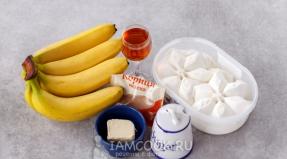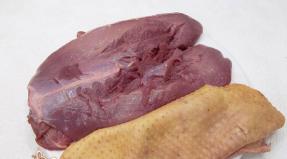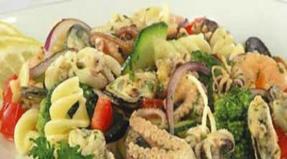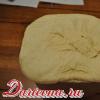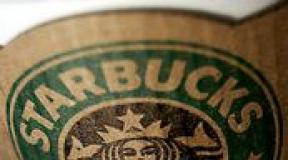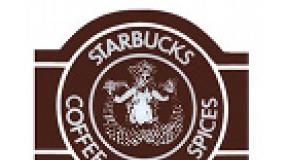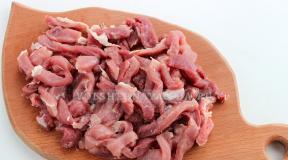How to use the technology card? Technological map of a dish: features and rules for compiling a Technological map of dishes are simple.
It's no secret that all enterprises that do not work according to the Collection of recipes (technological standards) are required to develop the document "Technical and technological map". However, not everyone understands how the TTK differs from the Technological Map, and how it should look. In this article, we will give a detailed answer to this question.
So, the requirements for the design of the TTC and the information contained therein are detailed in GOST 31987-2012. We will not describe in detail the content of GOST, we will limit ourselves to a description of the main features.
Unlike the Technological map, in the Technical - Technological one, along with the calculation of caloric content, indication of the scope, requirements for raw materials and requirements for sales and submission, it is necessary to calculate and indicate the following indicators:
- Organoleptic indicators
- Physico - chemical indicators (mass fractions)
- Microbiological indicators for the respective food group
Below we present the methodology for developing the TTC, and describe in detail the calculation of all the necessary indicators. Such a technique is based on the Guidelines, and all documents are generated automatically in the Chef Expert program for chefs and technologists.
Consider, for example, the calculation of all indicators for the TTC for the dish "Odessa Sausages"
|
1. Calculation of the nutritional and energy value of the dish |
||
|
We calculate the nutritional and energy value of a dish on the basis of the methodology given in the Methodological Guidelines for Laboratory Quality Control of Public Catering Products, M., 1997, (Letter No. 1-40 / 3805 of 11.11.91) (Part 2). |
||
|
1.1. We determine the protein content in the first ingredient of the recipe - "Fat mesh (Pryatine)". The protein content in 100 grams of the ingredient is found according to the reference tables of the chemical composition recommended for use by the Federal Service for Supervision of Consumer Rights Protection and Human Welfare (Rospotrebnadzor). The protein content in 100 grams of the ingredient "Fat mesh (Pryatine)" = 1.4 grams. The net weight of the ingredient "Fat mesh (Pryatine)" according to the recipe = 42 grams, therefore, the amount of protein in the ingredient = 42/100 * 1.4 = 0.59 grams (Article 7 in volume 1). This ingredient IS EXPOSED to heat treatment, therefore, the loss of protein during heat treatment is determined according to the reference data = 10% (Art. 10 in v. 1). Thus, the total amount of protein in the ingredient = 0.59 * (100-10) / 100 = 0.53 grams. (Art. 14 in Vol. 1) |
||
|
1.2. The ingredient "Fat mesh (Pryatine)" DOES NOT HAVE TECHNOLOGICAL LOSS after heat treatment (Art. 13 in v. 1), so the total amount of protein in the ingredient = 0.53 * (100-0) / 100 = 0.53 grams. |
||
|
1.3. The ingredient "Fat net (Pryatine)" IS CONSIDERED in the output of the dish (Article 17 in v.1), so the protein content IS CONSIDERED in the total protein content of the dish. |
||
|
1.4. Similarly, we determine the content of carbohydrates and fats in the ingredient. |
||
|
1.5. In the same way, we determine the content of proteins, fats and carbohydrates for all ingredients in the dish, and enter the data obtained in Table 1. |
||

|
2. Calculation of the mass fraction of solids * |
||
|
2.1. We determine the content of dry matter in the first ingredient of the recipe - "Fat mesh (Pryatine)". The content of dry matter in 100 grams of the ingredient is found according to the reference tables of the chemical composition recommended for use by the Federal Service for Supervision of Consumer Rights Protection and Human Welfare (Rospotrebnadzor). The content of dry matter in 100 grams of the ingredient "Fat mesh (Pryatine)" = 94.3 grams. The net weight of the ingredient "Fat mesh (Pryatine)" according to the recipe = 42 grams, therefore, the amount of dry matter in the ingredient = 42/100 * 94.3 = 39.61 grams. |
||
|
2.2. The ingredient "Fat mesh (Pryatine)" DOES NOT HAVE TECHNOLOGICAL LOSSES after heat treatment (st. 13 in v. 1), therefore the total amount of dry matter in the ingredient = 39.61 * (100-0) / 100 = 39.61 gram. |
||
|
2.3. The ingredient "Fat mesh (Pryatine)" IS CONSIDERED in the output of the dish (Art. 17 in v. 1), therefore the content of dry matter SHALL be taken into account in the total content of dry matter in the dish. |
||
|
2.4. Similarly, we determine the dry matter content for all ingredients in the dish, and summarize the obtained values. |
||
|
2.5. To convert to a percentage of the solids content in the dish, multiply the resulting amount by 100 and divide by the serving yield (100 grams). |
||
|
2.6. Let's sum this percentage with the maximum allowable salt content in the dish = 1.33%. Thus, we obtain the Maximum (theoretical) content of solids in the dish = 62.39%. |
||
|
2.7. The minimum allowable dry matter content is calculated by the formula: for first courses and sauces: 0.85 * Maximum content of dry matter, for other dishes: 0.9 * Maximum content of dry matter. 0.85 and 0.9 - coefficients that take into account the loss of solids in the cooking process and allowable deviations in the portioning of dishes. Thus min. allowable dry matter content in the dish = 62.39 * 0.9 = 56.15%. |
||
|
* In accordance with Appendix 2 of the Methodological Guidelines for Laboratory Quality Control of Public Catering Products, M., 1997, (Letter No. 1-40/3805 dated 11.11.91), in this category of dishes, the mass fraction of solids is DETERMINED in laboratory analysis. |
||
|
3. Calculation of the mass fraction of fat ** |
||
|
3.1. We determine the amount of pure fat in the ingredient "Fat network (Pryatine)" (the mass fraction of fat is taken into account only in the main fat-containing ingredients (butter, sour cream, milk, etc.)), by multiplying the net weight of the ingredient (in grams) by the fat content (in gamma per 100 g of ingredient, or in %) and divided by 100. Data on the content of natural fat in cereals, meat products, etc. we neglect. MJ = 42/100 * 0 = 0 grams. |
||
|
** In accordance with Appendix 2 of the Methodological Guidelines for Laboratory Quality Control of Public Catering Products, M., 1997, (Letter No. 1-40/3805 dated 11.11.91), in this category of dishes, the mass fraction of fat in laboratory analysis is NOT DETERMINED. |
||
|
4. Calculation of the mass fraction of sugar *** |
||
|
4.1. We determine the amount of pure sugar in the ingredient "Fat mesh (Pryatine)" (the mass fraction of sugar by sucrose is taken into account only in sugar - sand, refined sugar, powdered sugar, etc.), by multiplying the net weight of the ingredient (in grams) by the content sugar (in grams per 100 g of ingredient, or in%) and dividing by 100. MDS = 42/100 * 0 = 0 grams. |
||
|
*** In accordance with Appendix 2 of the Guidelines for laboratory quality control of public catering products, M., 1997, (Letter No. 1-40 / 3805 of 11.11.91), in this category of dishes, the mass fraction of sugar in laboratory analysis is NOT DETERMINED . |
||
|
5. Calculation of the mass fraction of salt **** |
||
|
**** In accordance with Appendix 2 of the Methodological Guidelines for Laboratory Quality Control of Public Catering Products, M., 1997, (Letter No. 1-40/3805 dated 11.11.91), in this category of dishes, the mass fraction of salt is DETERMINED in laboratory analysis . |
|
|
6. Microbiological indicators |
|
|
6.1. To determine the microbiological quality indicators, we are guided by the Technical Regulations of the Customs Union TR TS 021-2011 "On food safety". |
|
A properly formed Techno-technological map looks like this:


In general, the TTK development process is not particularly difficult if you develop documents using a special program. Calculating all indicators on a calculator is very time-consuming and inefficient. You can learn more about the program for the development of Technological documentation "Chief Expert" on the official website
Any catering establishment is required to have technological cards - this is required by law. Today we will tell you: what are technical maps, what they are and how to automate work with technological maps.
What is a technological map
In general, a worksheet is a document containing information about the ingredients of a dish and how it is prepared. It contains the following information:
- the number and name of the products that make up the dish;
- recipe;
- rules of registration and submission.
The procedure for compiling, maintaining and storing technological maps is regulated by GOST 31987-2012 “Public catering services”. This document is mandatory for use in all catering establishments, regardless of the form of ownership. Failure to comply with this requirement threatens with penalties in accordance with the Code of Administrative Offenses of the Russian Federation.
Sample flow sheet
What are technological maps
Simple technological map - TK
Starts on dishes prepared according to standard recipes. Such recipes are listed in culinary guides and approved by the relevant GOSTs. In this case, simplified requirements are applied to the document: only the composition and recipe are indicated. At the request of the organization, you can specify the nutritional value. Important point: the source of the recipe must be indicated in the TC. This may be a link to a reference book or GOST, from which it was taken.
Simple shopping malls serve to ensure that catering companies do not reinvent the wheel every time. It makes no sense to develop your own recipe for boiled potatoes in each canteen - this process is formulaic. The rules for issuing a shopping mall according to a simplified scheme are specified in GOST 31987-2012 “Catering Services”.

Technical and technological map - TTK
But here everything is more complicated. Such a document is developed for each new dish that is not in any reference book. There is much more information here. The TTC must include:
- name of the organization that developed the technical and technological map;
- application area. In this paragraph, a list of catering establishments is written that can use the recipe at home;
- raw material requirements. It indicates the list of accompanying documents, security confirmation, and so on;
- name and quantity of ingredients;
- the total mass of the dish at the exit. During cooking or heat treatment, dishes may lose some of their weight - this must be taken into account;
- full description of the technological process. Everything is taken into account: from the methods of cutting products to the time of heat treatment. For each typical process, you must specify a link to GOST or the regulatory document according to which it is carried out. For imported products, their own recommendations are used;
- requirements for the design and rules for serving dishes, as well as storage conditions;
- quality and safety parameters. This paragraph describes the appearance, nutritional value of the dish, its taste and smell.
TTK is developed by a responsible person and approved by the head of the catering establishment.

Technical and technological map of Greek salad
TK and TTK must be printed out, have live signatures with seals and be stored in an accessible place. They must be presented at the request of the inspection authorities.
Below you can download samples of technical sheets for some dishes and drinks:
Technological maps are compiled not only for catering products, but also in any other area where products are made from any raw material.
Technological cards and inventory systems
Try all the features of the EKAM platform for free
Read also
Privacy agreement
and processing of personal data
1. General Provisions
1.1. This agreement on confidentiality and processing of personal data (hereinafter referred to as the Agreement) is accepted freely and of its own free will, applies to all information that Insales Rus LLC and / or its affiliates, including all persons belonging to the same group with LLC "Insales Rus" (including "EKAM service" LLC) may receive about the User while using any of the sites, services, services, computer programs, products or services of "Insales Rus" LLC (hereinafter referred to as the "Services") and in during the execution of Insales Rus LLC of any agreements and contracts with the User. The User's consent to the Agreement, expressed by him in the framework of relations with one of the listed persons, applies to all other listed persons.
1.2. The use of the Services means the User's consent to this Agreement and the conditions specified therein; in case of disagreement with these conditions, the User must refrain from using the Services.
"Insales"- Limited Liability Company "Insales Rus", PSRN 1117746506514, TIN 7714843760, KPP 771401001, registered at the address: 125319, Moscow, Akademika Ilyushin St., 4, building 1, office 11 (hereinafter referred to as "Insales" ), on the one hand, and
"User" -
or an individual who has legal capacity and is recognized as a participant in civil legal relations in accordance with the legislation of the Russian Federation;
or a legal entity registered in accordance with the laws of the state of which such entity is a resident;
or an individual entrepreneur registered in accordance with the legislation of the state of which such person is a resident;
which has accepted the terms of this Agreement.
1.4. For the purposes of this Agreement, the Parties have determined that confidential information is information of any nature (production, technical, economic, organizational and others), including the results of intellectual activity, as well as information about the methods of carrying out professional activities (including, but not limited to: information about products, works and services; information about technologies and research works; data on technical systems and equipment, including software elements; business forecasts and information about proposed purchases; requirements and specifications of specific partners and potential partners; information, relating to intellectual property, as well as plans and technologies related to all of the above) communicated by one party to the other party in written and / or electronic form, expressly designated by the Party as its confidential information.
1.5. The purpose of this Agreement is to protect confidential information that the Parties will exchange during negotiations, conclusion of contracts and fulfillment of obligations, as well as any other interaction (including, but not limited to, consulting, requesting and providing information, and performing other assignments).
2.Obligations of the Parties
2.1. The Parties agree to keep secret all confidential information received by one Party from the other Party during the interaction of the Parties, not to disclose, disclose, make public or otherwise provide such information to any third party without the prior written permission of the other Party, with the exception of cases specified in the current legislation, when the provision of such information is the responsibility of the Parties.
2.2. Each of the Parties will take all necessary measures to protect confidential information at least using the same measures that the Party applies to protect its own confidential information. Access to confidential information is provided only to those employees of each of the Parties who reasonably need it to perform their official duties for the implementation of this Agreement.
2.3. The obligation to keep secret confidential information is valid within the term of this Agreement, the license agreement for computer programs dated 01.12.2016, the agreement of accession to the license agreement for computer programs, agency and other agreements and within five years after termination their actions, unless otherwise agreed by the Parties.
(a) if the information provided has become publicly available without violating the obligations of one of the Parties;
(b) if the information provided became known to the Party as a result of its own research, systematic observations or other activities carried out without the use of confidential information received from the other Party;
(c) if the information provided is lawfully obtained from a third party without an obligation to keep it secret until it is provided by one of the Parties;
(d) if the information is provided at the written request of a state authority, other state body, or local government in order to perform their functions and its disclosure to these bodies is mandatory for the Party. In this case, the Party must immediately notify the other Party of the request received;
(e) if the information is provided to a third party with the consent of the Party about which the information is being transferred.
2.5. Insales does not verify the accuracy of the information provided by the User, and is not able to assess its legal capacity.
2.6. The information that the User provides to Insales when registering in the Services is not personal data, as they are defined in the Federal Law of the Russian Federation No. 152-FZ of July 27, 2006. "About personal data".
2.7. Insales has the right to make changes to this Agreement. When making changes in the current version, the date of the last update is indicated. The new version of the Agreement comes into force from the moment of its placement, unless otherwise provided by the new version of the Agreement.
2.8. By accepting this Agreement, the User acknowledges and agrees that Insales may send personalized messages and information to the User (including, but not limited to) to improve the quality of the Services, to develop new products, to create and send personal offers to the User, to inform the User about changes in the Tariff plans and updates, to send marketing materials to the User on the subject of the Services, to protect the Services and Users and for other purposes.
The user has the right to refuse to receive the above information by notifying in writing to the e-mail address Insales - .
2.9. By accepting this Agreement, the User acknowledges and agrees that the Insales Services may use cookies, counters, other technologies to ensure the operation of the Services in general or their individual functions in particular, and the User has no claims against Insales in connection with this.
2.10. The user is aware that the equipment and software used by him to visit sites on the Internet may have the function of prohibiting operations with cookies (for any sites or for certain sites), as well as deleting previously received cookies.
Insales has the right to determine that the provision of a certain Service is possible only if the acceptance and receipt of cookies is allowed by the User.
2.11. The user is solely responsible for the security of the means chosen by him to access the account, and also independently ensures their confidentiality. The User is solely responsible for all actions (as well as their consequences) within or using the Services under the User's account, including cases of voluntary transfer by the User of data to access the User's account to third parties on any terms (including under contracts or agreements) . At the same time, all actions within or using the Services under the User's account are considered to be performed by the User, except for cases when the User notified Insales about unauthorized access to the Services using the User's account and / or about any violation (suspicions of violation) of the confidentiality of their account access.
2.12. The User is obliged to immediately notify Insales of any case of unauthorized (not authorized by the User) access to the Services using the User's account and / or any violation (suspicion of violation) of the confidentiality of their means of access to the account. For security purposes, the User is obliged to independently carry out a safe shutdown of work under his account at the end of each session of work with the Services. Insales is not responsible for the possible loss or corruption of data, as well as other consequences of any nature that may occur due to the violation by the User of the provisions of this part of the Agreement.
3. Responsibility of the Parties
3.1. The Party that has violated the obligations stipulated by the Agreement regarding the protection of confidential information transmitted under the Agreement is obliged to compensate, at the request of the affected Party, the real damage caused by such a violation of the terms of the Agreement in accordance with the current legislation of the Russian Federation.
3.2. Compensation for damages does not terminate the obligations of the violating Party for the proper performance of obligations under the Agreement.
4.Other provisions
4.1. All notices, requests, demands and other correspondence under this Agreement, including those including confidential information, must be made in writing and delivered personally or through a courier, or sent by e-mail to the addresses specified in the license agreement for computer programs dated December 01, 2016, the agreement of accession to the license agreement for computer programs and in this Agreement or other addresses that may be specified in writing by the Party in the future.
4.2. If one or more provisions (conditions) of this Agreement are or become invalid, this cannot serve as a reason for termination of other provisions (conditions).
4.3. The law of the Russian Federation shall apply to this Agreement and the relationship between the User and Insales arising in connection with the application of the Agreement.
4.3. The User has the right to send all suggestions or questions regarding this Agreement to the Insales User Support Service or to the postal address: 107078, Moscow, st. Novoryazanskaya, 18, pp. 11-12 BC "Stendhal" LLC "Insales Rus".
Publication date: 01.12.2016
Full name in Russian:
Limited Liability Company "Insales Rus"
Abbreviated name in Russian:
Insales Rus LLC
Name in English:
InSales Rus Limited Liability Company (InSales Rus LLC)
Legal address:
125319, Moscow, st. Academician Ilyushin, 4, building 1, office 11
Mailing address:
107078, Moscow, st. Novoryazanskaya, 18, building 11-12, BC "Stendhal"
TIN: 7714843760 KPP: 771401001
Bank details:
Soup boiled beef
Frozen beef (rump Brazil article 337375 - Metro Cah & Carry) - 25 kg, cut with a saw into pieces of 3 kg. Divide into HDPE bags (black trash bags), seal tightly and place in washing baths. Pour water from the tap at a temperature of 25 ° C. Check the temperature with an immersion thermometer. For two to three hours, change the water in the bath. After complete defrosting, place the pieces of meat in gastronorm containers 2/1 in size, 400 mm deep and pour the containers with MAITREFOODS meat softener article 10324 in the amount of 3 grams per 1 kg. Half an hour after treatment with maltodextrin, place the meat in stove-top boilers with water in the proportion of 3 parts of water to 1 part of meat, bring to a boil and cook for 5 hours at a temperature of 75 ° C. Determine the temperature with a thermometer. After cooking, let the meat cool in the broth. After reaching a temperature of 20 °C, pack the meat with broth in portions in vacuum bags 250*400 mm 65 µm in size, sealing them using the cartridge method of 50-60 grams using a CAS sealer model CNT-400. After sealing, the bags are placed in a hotplate pot or gastronorm container with a sous-vide thermostat and processed at a temperature of 85 °C for 10 minutes. Then the bags are removed and placed in an ice bath or gastronorm container (water / ice ratio - 50/50). Ice bath temperature = +1 °C. During the cooling process, it is necessary to add ice, because. the temperature in the bathroom will rise because the bags are hot. The cooling cycle is at least 30 minutes. After the end of pasteurization, the packages are wiped dry with a rag and marked with a labeling gun. The label should contain the date of production, the serial number of the cook-producer, the date of expiration of the expiration date. The shelf life of meat is 4 days. Place of storage - medium temperature chamber at a temperature of +2 °C.
borscht broth
Fry the bones in a saucepan with the addition of vegetable oil until golden brown. Put chicken bones, pork and dill roots into cold water. Peel the bell pepper, chop coarsely and put in the broth. Grate the garlic, wrap in gauze and put in the broth. Cook for 3 hours over low heat, then add vinegar, paprika and hot pepper. Bring the broth to taste and strain through cheesecloth.
Pampushki with sauce
Mix all the ingredients in a bowl or in the bowl of a planetary mixer. Knead for 15 minutes at low speed in a planetary mixer or dough mixer. Roll into balls of 30 grams and put in a deep cast-iron frying pan, as in the photo, greased with vegetable oil. Brush with milk. Bake at 180 C in a combi oven or convection oven for 20 minutes.
To prepare the sauce - mix finely chopped garlic, salt, vegetable oil and water.
Beet kvass
Dilute beetroot juice with water in a proportion of ¼. Boil. Cool down. Add sugar, salt, citric acid in a proportion of 1/10 of the volume of the emulsion. Let cool. Pour into ice packs. Freeze in a shocker for 120 minutes. Remove for storage in the freezer.
In order to use the recipe for preparing a dish in the technological map, it is necessary to perform calculations using the following formulas:
Given:
x- weight of the finished dish according to the proportions of the recipe of the technological map
y - weight of raw materials for the finished dish according to the proportions of the recipe of the technological map
z-weight of one serving of the dish (according to your need)
a- The weight of one ingredient of the raw material for the production of the dish
Task: It is necessary to prepare 100 servings of a dish according to the technological card.
1. Find out the total weight of raw materials for the preparation of a given number of servings
2. Find out the weight of each individual ingredient to prepare a given number of servings
For example, the specified number of servings is 100
1. 100/(X/Z)= Number of repetitions of this recipe to make 100 servings
2. a * (x / z) * 100 / (x / z) \u003d weight of one ingredient for the production of 100 servings.
Examples
Eggplant in a walnut crust
| Raw material set |
Output of finished products |
||
|
Gross |
Net |
||
| eggplant |
675/500 |
||
| Mayonnaise | |||
| walnuts | |||
| Garlic | |||
| Vegetable oil | |||
| Greenery | |||
Cooking technology.
Chop the nuts, chop the garlic. Eggplant cut into circles. Mayonnaise is combined with nuts and garlic, mixed thoroughly. Eggplants are dipped in the resulting mixture and fried in vegetable oil.
pomegranate salad
| Raw material set |
Consumption of products for 100 servings |
Output of finished products |
|
|
Gross |
Net |
||
| Beef (brisket, crumble, …..) | |||
| Mass of boiled meat | |||
| Onion | |||
| Vegetable oil | |||
| Mass of passivated onions | |||
| Mayonnaise | |||
| Apples | |||
| Boiled beets | |||
| walnuts | |||
| Garnet | |||
Yield of one portion of semi-finished products ___________________
Yield of one portion of the finished product in grams_____1000___
Cooking technology.
Boiled meat is cut into strips. Onions are cut into half rings, sautéed until tender in vegetable oil. Apples with a seed nest removed, peeled, cut into strips. Boiled beets are peeled, rubbed on a grater. The grenades are cleared. Walnuts are roasted and crushed. Prepared components are placed in the following sequence: meat, onions, mayonnaise, apples, nuts, beets, mayonnaise.
Salad Elite
| Raw material set |
Consumption of products for 100 servings |
Output of finished products |
|
|
Gross |
Net |
||
| Green beans | |||
| Pine nuts | |||
| Shrimps | |||
| Sweet pepper | |||
| Vegetable oil | |||
| Greenery | |||
| Or crab sticks | |||
Yield of one portion of semi-finished products ___________________
The output of one portion of the finished product in grams _____ 1000_
Cooking technology.
The beans are boiled and chopped. Shrimps are boiled, sweet peppers are peeled, cut into strips. The prepared components are combined, seasoned with vegetable oil. Decorate with herbs and pine nuts.
In restaurants, a visitor's question about the ingredients of an unfamiliar dish causes bewilderment or the answer that this is a big secret. The client wants to know exactly what he ate - this is a completely normal requirement. To give an answer, you can look at the technological map.
Why make a technological map?
In the work of catering enterprises focused on a different level of provision of such a service, a mandatory requirement is the availability of such a document as a technological map of a dish. Without it, the company is not allowed to work. Why does the map exist? This is a question for random people in the restaurant business, because the cooking flow charts have all the information that starts with the purchase of products and ends with which puts the customer's order on the properly served table. Competently compiling this document allows chefs to find a way out of any situation in the kitchen without the instructions of the chef. For restaurant owners, dishes perform the function of controlling the consumption of products, the cost of each dish, the cost of raw materials, receiving daily revenue and calculating the profitability of the enterprise, and many other functions. This is a basic document that allows you to find out the profitability of a restaurant.
Cooking technology - what is it?

Cooking technology includes all the concepts of products, from their quality, ending with the chemical composition and consumer value, about the methods of processing raw materials and semi-finished products, about the correct methods of storing products, blanks and finished products. It also contains requirements for equipment, inventory in the kitchen with step-by-step instructions for all the actions of the cook. In general, work at catering establishments is the technological maps for dishes. Thanks to these nondescript tables and descriptions, it becomes possible to correctly, beautifully, tasty, healthy and on time feed the client with the ordered food in the amount that is stated in the menu. Then get a certain cost for such a service, which will ensure profit for a restaurant or cafe, and a random person satisfied with the combination of food quality and its price becomes a regular customer.
What information is in this document?
The information carried by the technological maps of cooking certainly includes the methods by which raw foods are cleaned, washed, cut, and subjected to any heat treatment. There are also gross products, their grade and quality, rules for storing raw materials and prepared food. This information should correspond to special collections of recipes, which are referenced in the map. Each flow chart of a dish explains how to prepare raw materials, what time and at what time the product is processed, what weight losses occur during proper heat treatment, starting from the preparatory stage and ending with the stove. This data will allow the chef to use the required amount of product for cooking portioned dishes. In addition to a step-by-step map for dishes, they contain data on the possible replacement of products, which are also regulated by special collections and allow you to make adjustments without losing taste and nutritional value. Up to registration and submission - everything is prescribed in this document.

How to make a map correctly?
In order for the technological map of the dish to be drawn up correctly and fulfill its functional load, the following data must be entered into it.

What can be learned from this document?
Technological maps for dishes make the work of chefs of any category easier. It is no secret that many restaurant-type establishments undertake to train chefs from scratch, referring to a specific menu and an experienced chef. The question of such training is whether a kitchen professional will be able to tell a beginner everything that is needed, and will he be willing to do it? For a novice cook, it is much more useful to read verified information collected in a single document. It is also useful for experienced workers to read such a map, because there are culinary products on the menu that are ordered once a year, and some subtleties of technology can be forgotten. However, the most important function of the cards is the acquisition of a strictly necessary amount of products and their correct consumption. And also - the most delicious dish, but forgotten by the waiter or cooked incorrectly, can permanently deprive any cuisine of its reputation.
